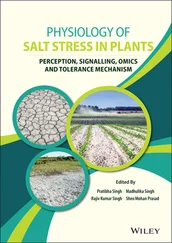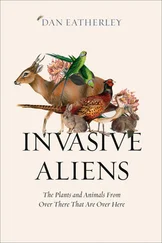Last of all, even bog gardens can get a look in with a selection of moisture-loving specimens such as Gunnera manicata, Acorus gramineus variegata, Zantedeschia aethiopica ‘Crowborough’ and Arundo donax.
I can’t think of any garden anywhere that wouldn’t benefit from at least a small selection of architectural plants.
Garden designers
If you really can’t bear the thought of choosing your own plants and would prefer someone else to create a beautiful garden for you, then it’s worth considering bringing in a professional.
There are lots of garden designers out there, and although many of them are talented and dedicated people, some of them are not quite so marvellous. So, how do you choose one?
There is nothing to beat a verbal recommendation from a chum or neighbour who has recently had their garden revamped. And it’s usually a fairly safe bet to employ someone who’s been in the business for a long time. He or she will have the benefit of years of experience and, hopefully, will still retain a certain amount of enthusiasm for the task.
Don’t just accept quotes from one designer; it pays to shop around. It is also reasonable to ask to see their portfolio of recent commissions. If their photos are beautifully presented in a well-cared for album, this bodes well. If their portfolio consists of a few faded pictures stuffed into a tatty old envelope, then their attention to detail probably won’t amount to much.
Within reason, try not to be too influenced by the cost quoted. To dismiss a quote purely because it’s expensive can definitely be the wrong thing to do. You might miss out on the best, tidiest, nicest and most professional teams of chaps or ladies in existence. Sometimes a very cheap quote might not include various hidden extras that will be tacked on at the end of the job. In other words, the gardening world is no different from anything else when it comes to employing someone’s service.
Finally, just because someone is a designer, don’t assume they are a gardener. Some designers never leave their office desk and will present you with a garden plan only. The planting and hard graft might still have to be done by you.
New gardens & borders
Sometimes the opportunity arises to create a completely new section of garden. If a reasonably large area is being considered for this type of planting, its preparation should be given some careful thought. Architectural plants need the same kind of preparation as most other types of plant, but it’s useful to offer a couple of tips on the subject here.
Fashionable advice is often given about the use of some kind of membrane cover, such as Mypex. This is placed over all of the soil in a large sheet and is used to suppress weeds and slow down water evaporation. Please, please, I beg of you, don’t use this ghastly stuff. It’s truly awful and, although it does keep the weeds from growing, the disadvantages far outweigh any benefits. Although useful for large commercial areas, it has no place in a private garden. Once in situ it becomes impossible to condition the soil in any way. Digging can’t be done – this won’t hurt for a couple of years but, long-term, it isn’t a good thing, as the soil will gradually become more compacted and stagnant. Feeding, except with foliar food, isn’t possible. Worms can’t work the soil, as they cannot pass back and forth through the material. Adding any new plants is a bore because the material has to be uncovered and cut before a planting hole can be dug. And, lastly, it’s hideous to look at. Even when top-dressed with a mulch of pea shingle or bark chippings, the weather and local wildlife will soon shift this around, exposing areas of it to public view. Well, I think I’ve probably made my views on it more than clear, so enough said.

ABOVE
A careful balance of shape and colour can be used to create a pleasing mix of architectural plants.
When a new border has been dug over and levelled, it’s a useful opportunity to be able to feed the whole area in one go prior to any planting. Numerous references throughout the book are made to using copious quantities of well-rottted manure. This is excellent for providing all sorts of nutrients for practically all types of architectural plant. But, make sure it is well rotted and has reached the stage where it is dryish and crumbly. If it is runny and smells bad enough to make your eyes water, then don’t use it. When it is this fresh, it needs nitrogen to help it to rot down further. So, instead of adding much-needed nitrogen to the soil, it is actually taking it away. Also, very fresh manure can scorch delicate foliage and roots. If well-rotted manure is difficult to obtain, buy sacks of 6X from the local garden centre. It works just as well and is easy and pleasant to use. It also stinks out the entire neighbourhood for about a week but, what the hell … Blood, fish and bone also gets talked about a lot in these pages. It is bought as a powdered mix and sprinkled over the surface of the soil. It smells awful, but the horrible pong will soon fade. If you keep a pet dog, this powder will have to be forked in lightly otherwise the greedy mutt will feast on it.
Before planting, take some time to arrange all of the plants across the new area. While they are still in their pots, they are easy to move around until their exact positions have been decided on.
A few thoughts
Although the following are completely random thoughts, I do think that they are worth mentioning.
Tools & equipment
Whatever tools or gardening equipment you choose to purchase, please try to buy the best and most expensive offered. Good-quality garden tools should only have to be bought once, whereas cheap tools seldom last for more than a few years. This, of course, applies to almost all types of gardening. However, architectural plants are such a special range that they deserve the very best aftercare. An architectural plants garden often dispenses with the traditional lawn, as grass takes up valuable planting space. So, the money saved from not needing an expensive mower can go into the few really useful tools that are regularly required.
Strong sturdy ladders are a must, and there are some beautifully made, lightweight Japanese ones currently on the market, which are worth every penny of the asking price. Similarly, if your choice of plants includes lots that require frequent clipping, such as Buxus or any topiary, it is worth buying a pair of lightweight, super-sharp secateurs to make the task more pleasurable. And expensive secateurs are a joy to use. They can be taken to pieces and sharpened to keep them in pristine condition for decades, and they usually come with a smart leather holster to keep them in.
To help in moving some of the larger plants in and out of the conservatory or around the garden prior to planting, a superior type of sack truck is essential. Buy one that is beautifully balanced, easy to use and has nice thick pneumatic tyres for bouncing over uneven ground or gravel.

ABOVE
Formally clipped plants such as this Hebe rakaiensis are always a feature of Japanese-style gardens.
Pruning & chopping
If lots of herbaceous plants such as Canna and Hedychium are used, after they have turned brown for the winter, instead of cutting them right down to ground level, leave a couple of inches of stem showing above the ground. These will remind you of their whereabouts so that other plants aren’t mistakenly planted in the same place. This might sound drearily obvious, but it’s something I read in a gardening magazine years ago and I found it a useful tip.
Читать дальше














